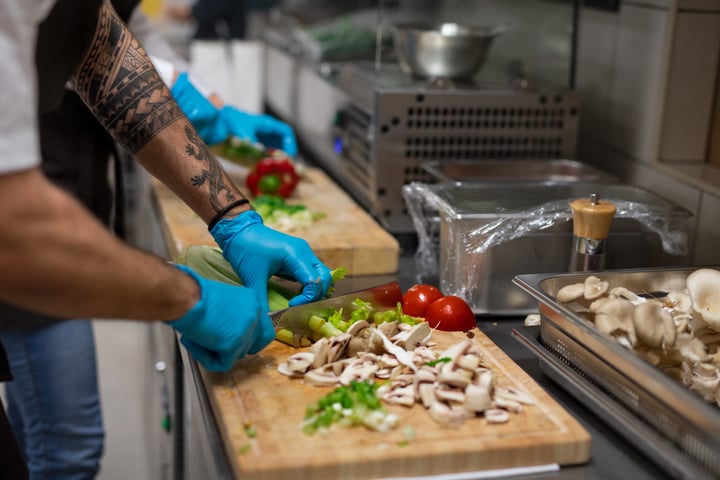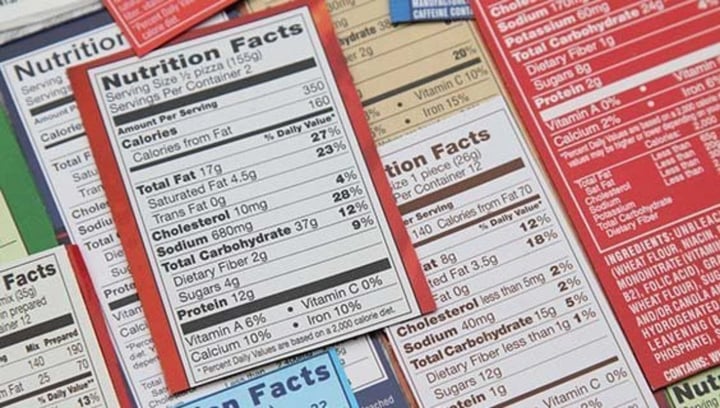
- Home
- Crunchtime Blog
- Tips from Ships: How to Reduce Food Waste Across Large Operations

Tips from Ships: How to Reduce Food Waste Across Large Operations
When it comes to complex inventory management challenges, few environments can match the intricacies of a cruise ship. Operating as floating cities with concentrated consumption, limited storage capacity, and complicated global supply chains, cruise lines have developed sophisticated inventory solutions that handle what most restaurant environments would consider impossible. In this article, we explore how Sea Chefs and Royal Caribbean Group leverage Crunchtime's inventory management system to optimize their supply chains and significantly reduce food waste, demonstrating capabilities that would excel in any foodservice operation.
Cruise Line Inventory Management: A Master Class in Complexity
Cruise lines face unique inventory challenges that make traditional restaurant operations seem simple by comparison. As Christian from Sea Chefs explains, cruise ships sometimes place master orders up to six months in advance for expedition ships. With 10 million guests served annually across Royal Caribbean Group's fleet and 15,000 global suppliers covering five unique brands, the scale and complexity are immense. When products are shipped worldwide and opportunities for last-minute adjustments are limited, precision becomes paramount.
To meet these challenges, Christian developed an innovative solution that integrates Crunchtime's database with Excel, creating a streamlined system that analyzes historical usage data across multiple cruise periods. This allows provision masters to make informed ordering decisions based on past consumption patterns, upcoming passenger counts, and projected needs, all customized to each ship's unique loading dates and voyage patterns.
Sophisticated Forecasting and Order Automation
Both Sea Chefs and Royal Caribbean have invested extensively in advanced forecasting tools. Brenda, Director of Global Inventory from Royal Caribbean Group, highlighted how they combine Crunchtime data with additional information like guest demographics and other cruise-specific variables. Their team runs this data through sophisticated analytics and machine learning models to support supply chain planning and improve inventory positioning.
Christian demonstrated how Sea Chefs transforms this data into actionable insights. Their system creates visibility into product rotation and usage patterns, allowing provision masters to adjust orders based on both historical data and their specialized knowledge of upcoming menu changes. The master order process, which once took considerable time with high potential for human error, now takes approximately five minutes, with a significant reduction in waste as an added benefit.
Recipe Management: The Foundation of Waste Reduction
Both organizations emphasized the critical importance of recipe management in reducing food waste. Royal Caribbean has implemented over 2,000 recipes for just one of its brands, improving costing accuracy and consumption visibility. Similarly, Sea Chefs has focused on addressing the complex relationship between inventory units and purchasing units, ensuring that provision masters can clearly see conversion rates when ordering.
This recipe-based approach helps both companies better understand exactly what products are needed in which quantities, preventing over-ordering and reducing waste. As Brenda noted, Royal Caribbean has committed to reducing food waste by 50% by 2025 fleet-wide, and they've already achieved a 25% reduction as of summer last year, with recipe management playing a significant role in this success.
Supply Chain Optimization Beyond Food
While food waste reduction is a priority, both companies leverage Crunchtime to optimize their entire supply chains. Brenda explained how Royal Caribbean focuses on SKU harmonization across brands, which reduces freight costs and simplifies customs clearance for global cargo, an increasingly restrictive challenge for cruise lines. She noted that non-food items like uniforms and consumables actually represent their largest area for improvement.
The value created through these supply chain optimizations doesn't just translate to cost savings. Royal Caribbean reinvests much of this value into enhancing its product offerings, improving guest experiences, and ultimately driving higher NPS (Net Promoter Score) ratings, its primary business metric.
Wider Applications
The inventory management practices of cruise lines offer a compelling case study for restaurants of all sizes. If Crunchtime's solutions can help manage the extreme complexities of global cruise operations, with their constantly changing menus, fluctuating passenger counts, and international supply chain challenges, then they can certainly handle the demands of traditional restaurant environments.
What makes these cruise line implementations particularly impressive is how they blend technological efficiency with human expertise. While automated systems handle data analysis and forecasting, they're designed to incorporate the specialized knowledge of experienced staff. This balanced approach delivers the best of both worlds: data-driven precision with operational flexibility.
As restaurants continue to face rising costs and increasing pressure to reduce waste, they would do well to study the sophisticated inventory management practices pioneered by cruise lines. The lesson is clear: even the most complex inventory challenges can be mastered with the right combination of technology, processes, and people, creating value that extends far beyond the bottom line. To learn more about Crunchtime’s inventory management solution, visit here.
Share this post
Related


Two Keys to Lowering Restaurant Food Waste

